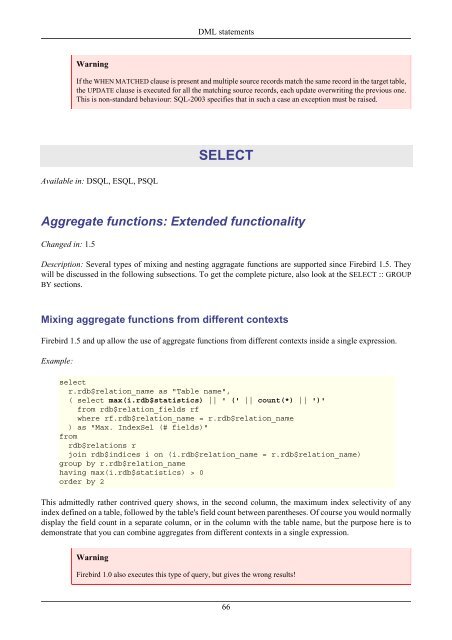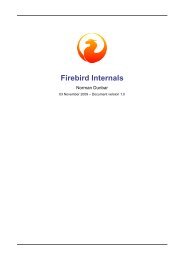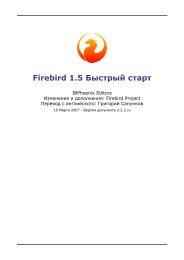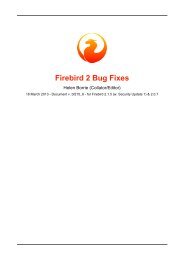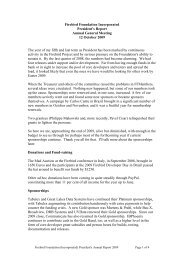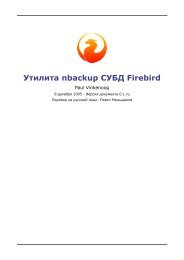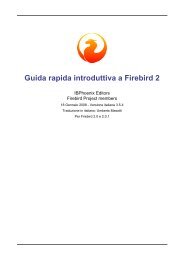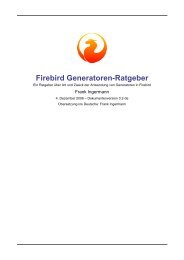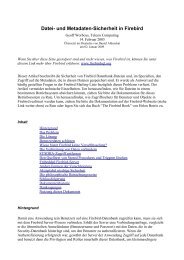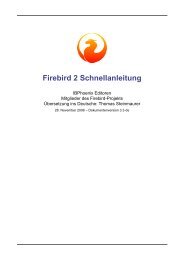Firebird 2.1 Language Reference Update
Firebird 2.1 Language Reference Update
Firebird 2.1 Language Reference Update
Create successful ePaper yourself
Turn your PDF publications into a flip-book with our unique Google optimized e-Paper software.
Warning<br />
DML statements<br />
If the WHEN MATCHED clause is present and multiple source records match the same record in the target table,<br />
the UPDATE clause is executed for all the matching source records, each update overwriting the previous one.<br />
This is non-standard behaviour: SQL-2003 specifies that in such a case an exception must be raised.<br />
Available in: DSQL, ESQL, PSQL<br />
SELECT<br />
Aggregate functions: Extended functionality<br />
Changed in: 1.5<br />
Description: Several types of mixing and nesting aggragate functions are supported since <strong>Firebird</strong> 1.5. They<br />
will be discussed in the following subsections. To get the complete picture, also look at the SELECT :: GROUP<br />
BY sections.<br />
Mixing aggregate functions from different contexts<br />
<strong>Firebird</strong> 1.5 and up allow the use of aggregate functions from different contexts inside a single expression.<br />
Example:<br />
select<br />
r.rdb$relation_name as "Table name",<br />
( select max(i.rdb$statistics) || ' (' || count(*) || ')'<br />
from rdb$relation_fields rf<br />
where rf.rdb$relation_name = r.rdb$relation_name<br />
) as "Max. IndexSel (# fields)"<br />
from<br />
rdb$relations r<br />
join rdb$indices i on (i.rdb$relation_name = r.rdb$relation_name)<br />
group by r.rdb$relation_name<br />
having max(i.rdb$statistics) > 0<br />
order by 2<br />
This admittedly rather contrived query shows, in the second column, the maximum index selectivity of any<br />
index defined on a table, followed by the table's field count between parentheses. Of course you would normally<br />
display the field count in a separate column, or in the column with the table name, but the purpose here is to<br />
demonstrate that you can combine aggregates from different contexts in a single expression.<br />
Warning<br />
<strong>Firebird</strong> 1.0 also executes this type of query, but gives the wrong results!<br />
66


